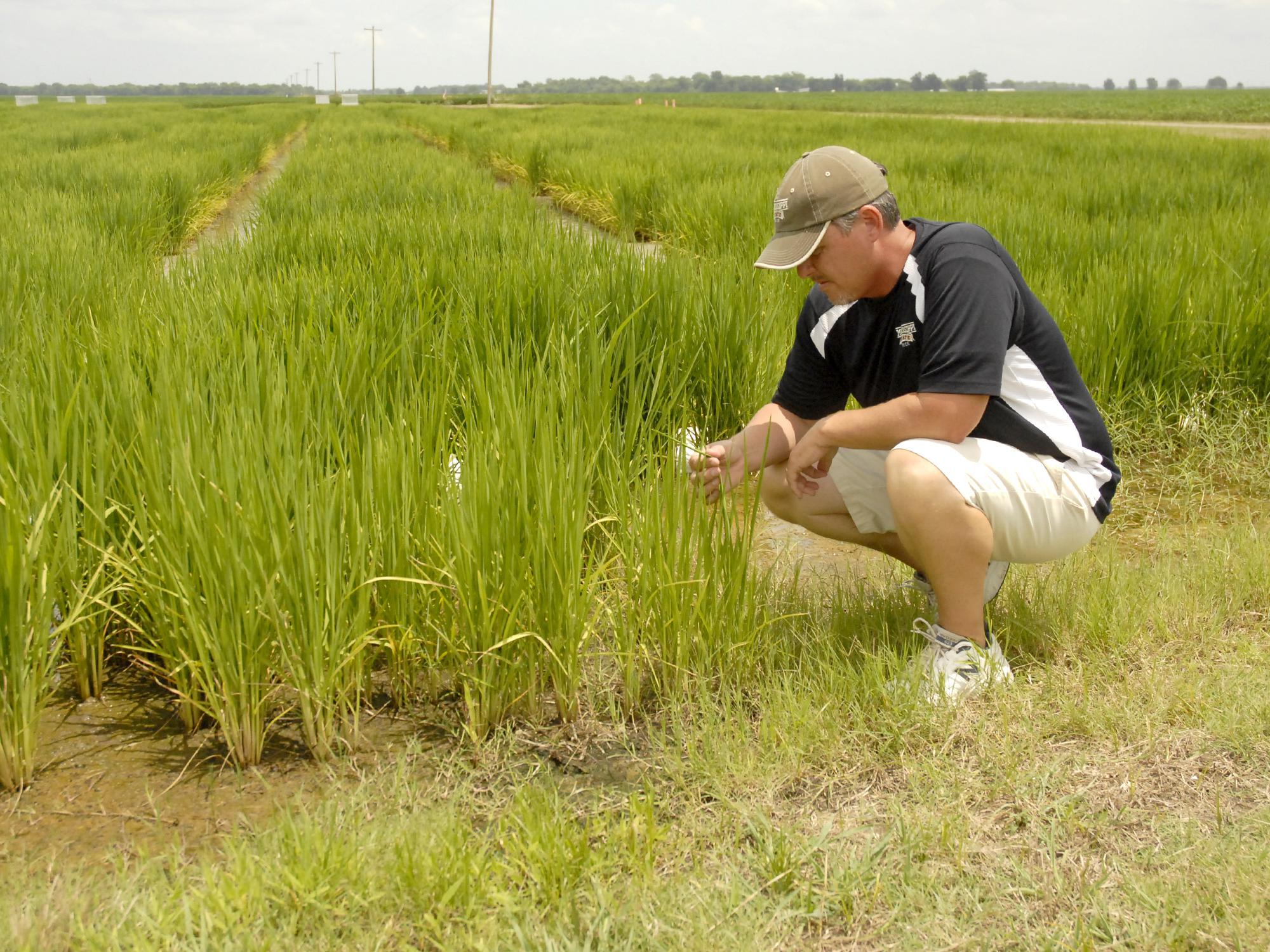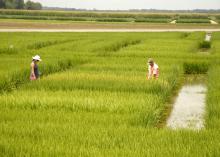Information Possibly Outdated
The information presented on this page was originally released on July 19, 2013. It may not be outdated, but please search our site for more current information. If you plan to quote or reference this information in a publication, please check with the Extension specialist or author before proceeding.
Delayed rice crop could face late-season threats
STONEVILLE – Like most Mississippi row-crops struggling to overcome last spring’s challenges, rice will be at the mercy of late-season weather to produce average yields.
Tim Walker, rice specialist with the Mississippi State University Extension Service, said rains kept farmers from timely plantings. After that, cool spring temperatures slowed growth, putting much of the rice crop about three weeks behind schedule.
Once the crop was established, a new problem emerged.
“The biggest challenge has been herbicide drift from other crops,” he said.
Walker said drift is typically worse during rainy years, when growers must rely more on aerial applications of herbicide to control the weeds in fields.
“The next big hurdles will be the day and night temperatures in August, when most of the rice crop is pollinating,” he said. “High nighttime temperatures during pollination increase the risk of yield losses because of panicle blight, and there is nothing growers can do about that. They are at the mercy of Mother Nature.”
Walker said he thinks Mississippi growers planted close to the same amount of rice as they did in 2012, when they harvested 126,000 acres. The average yield was 7,200 pounds per acre, just below the state record of 7,350 pounds set in 2007.
This spring, growers battled increased numbers of water weevils, largely due to the slow growth of young plants that reduced the effectiveness of seed treatments over time. Rice was just starting to head in mid-July, making any harvest unlikely before Aug. 20. Walker said the bulk of Mississippi’s crop will be harvested in mid-September.
Larry Falconer, Extension agricultural economist at the MSU Delta Research and Extension Center in Stoneville, said rice prices are increasing as foreign and domestic demand contribute to tighter supplies. Economists also may have overestimated the size of last year’s crop.
“The U.S. Department of Agriculture recently estimated the total supply of long-grain rice for the coming crop year to be 12 percent below last year’s level,” he said.
Falconer said this will lead to the tightest supplies of long-grain rice since the 2003/2004 crop year. The lower supply is expected to support higher prices through the remainder of this year.
“Many industry sources believe that the USDA will lower production estimates further for this year’s crop as we progress into the new marketing year,” he said.
Falconer said Mississippi’s rice acreage has decreased because corn and soybeans are more profitable now. As recently as 2010, Mississippi farmers planted 305,000 acres of rice.
MSU Extension Service specialists estimated that the cost of long-grain rice production increased between 4 and 6 percent from 2012 to 2013, depending on the production system employed.




